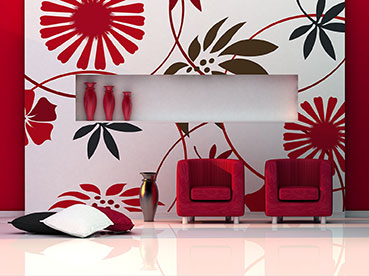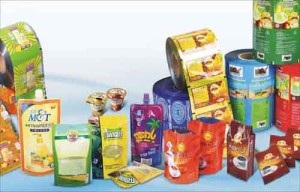 When time and money are precious commodities, three-dimensional printing — also known as rapid prototyping — offers a way to save
When time and money are precious commodities, three-dimensional printing — also known as rapid prototyping — offers a way to save
both and gain a competitive edge by providing tangible proof-of-concept for products, manufacturing companies said.
The 3-D printers — which employ a process like ink-jet printers to build complex forms by spraying layer upon layer of plastic based on a digital image, are becoming invaluable tools for Central Pennsylvania manufacturers, executives said. Such a machine can build a prototype that validates new product designs without energy, time, manpower and materials that would be used to make a part or series of parts in metal.
There’s a flip side, said Larry Heck, president and CEO of Palmyra-based Philadelphia Mixing Solutions, which makes industrial mixers and pumps.
“Actually, what we’re trying to do is kill (impractical) products as soon as possible before we expend resources,” Heck said.
To develop an expensive steel prototype that will never work, nor give the company a return on investment, is wasteful and then requires the entire process be started over, he said. Three-D printing prevents that waste, he said.
“We’ve had a couple of (designs) where we’ve said, ‘Oh, dear, that doesn’t work as well as we thought,’ ” Heck said.
Sending the engineering plans to a third-party 3-D printer only requires sending an email because 3-D print machines work off of computer-aided drafting and design programs, he said.
That’s the entire point: to save money and time from start to finish, said Thomas Farnan, who sells 3-D printers and engineering software for New Jersey-based Cimquest Inc. The company has an office in Susquehanna Township, Dauphin County.
“The further you get down the production process, the more expensive it becomes to kick it back upstairs to design because there’s a problem,” Farnan said.
Producing steel prototypes could cost hundreds if not thousands of dollars and takes days to finish, depending on the complexity and number of parts, he said. Three-D printing can produce the same parts or an entire working prototype with multiple parts for a fraction of the cost and time, he said.
That also frees shop room machines and personnel to work on customer orders instead of prototypes, he said.
Three-D can range from desktop versions costing $15,000 capable of building small-scale items to machines costing hundreds of thousands of dollars that can print larger prototypes in multiple plastics. Costs have come down significantly over the past decade as 3-D printers became better, Farnan said.
The printers use plastic and a support material for the empty space between multiple parts in a single prototype. Once the printing is finished, the product is submerged in a solution to dissolve the support material, leaving just the working plastic parts. The printers can use multiple plastic grades, including approved plastics for airplane parts and bio-compatible plastics for surgical implants.
Although 3-D printers can produce working prototypes to demonstrate proof of concept, there are limitations depending on the type of plastic, Farnan said. Some types will wear down and break over repeated use while others hold up better to stress. What materials a company uses depends on their needs and printer models, he said.
Speed to market and cost are crucial dynamics for manufacturers in a global environment, said John Lloyd, president and CEO of York-based Mantec Inc., a resource center helping manufacturers adapt to changing markets. Three-D printing helps companies speed up the process and reduce the cost, which allows them to get products to market faster.
Lancaster County-based Sechan Electronics Inc. bought a 3-D printer to aid its operations making missile launch and guidance electronics in unmanned aerial vehicles for military contractors, President Dave Williams said.
“The customer can approve the design before you make any more expensive metal parts,” he said.
In addition, having an accurate prototype quickly helps the Warwick Township-based manufacturer show and explain its products to customers, he said.
“Some people have a problem visualizing something from engineering drawings, and this helps,” Williams said.
Small businesses are using desktop 3-D printers to make limited runs of parts, Farnan said. If you have to produce thousands of plastic parts a day, 3-D printing isn’t the way to do it. However, Cimquest has one customer in the Allentown area with a machine in his home office to produce small runs of plastic buckles for customers, he said.
As the machines become more common in manufacturing, there are more companies willing to produce a prototype for others, which offers a valuable service to firms not yet ready to spend the money for their own 3-D printer, companies said.
Even firms outside manufacturing are using 3-D printing — albeit on a limited basis — to help their business.
Harrisburg-based marketing firm Purpose1 Inc. has used the process as an added service to its manufacturing clients, owner Carlton Shank said. For the past three years, Purpose1 has offered 3-D printing as a way for companies to create working scale models of their products for trade show demonstrations. Purpose1 uses third-party 3-D printers to make the models, he said.
Purpose1’s service helped Philadelphia Mixing Solutions produce a model of its industrial pumps to take to trade shows, which saved money on shipping metal models weighing hundreds of pounds, Heck said. A plastic model the same size weighs 50 pounds and can be transported in a suitcase, he said. That saved his company money promoting its products, he said.
“It fits into our business as an innovative way to take a product for trade shows and make a small-scale model to point out particular attributes,” Shank said.
Source : www.centralpennbusiness.com






